East Rift Valley Festival: Showcasing Taiwan's indigenous heritage
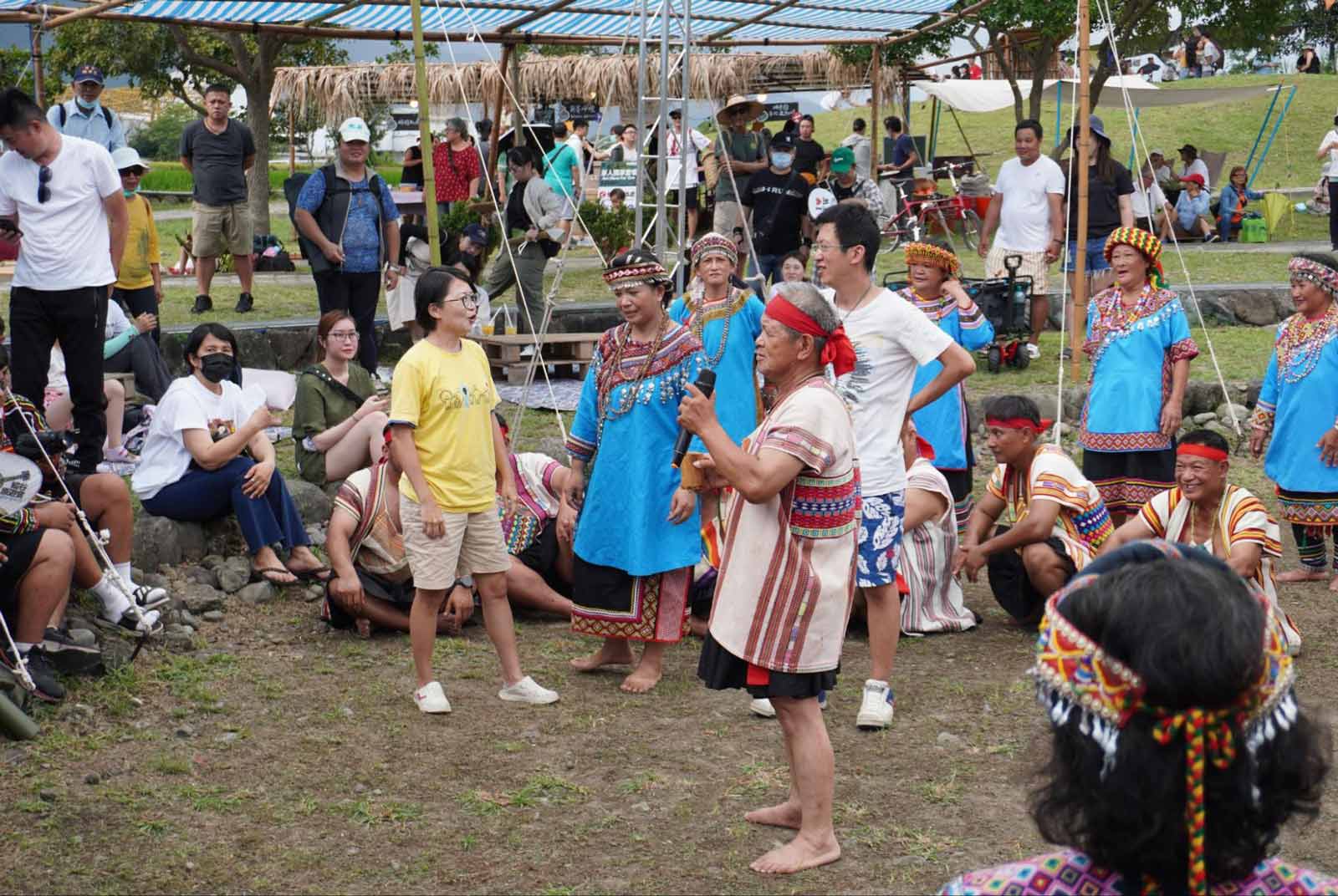
Source:Ian Huang
Discover the magical convergence of Taiwan's indigenous cultures and Hualien's scenic beauty at the East Rift Valley Festival, just a stone's throw away from Taipei. This festival showcases the cultural richness of Hualien and Taitung, serving as a bridge between different races in Taiwan.
Views
East Rift Valley Festival: Showcasing Taiwan's indigenous heritage
By Ian Huangweb only
Walking into the venues of the East Rift Valley Festival, held by the Tourism Bureau, MOTC, and experiencing the collision of Taiwan’s indigenous cultures and the natural scenery of Hualien’s rice paddies, it’s hard to believe this wonderland of peace is only a couple of hours' drive from the bustling capital city, Taipei.
Hualien and Taitung, the two main counties of eastern Taiwan, have the most diversified population, culture, and abundant resources. With almost one-third of their population being indigenous, it has a relatively well-developed representation of the profound legends of the tribes and has become the bridge between different ethnic groups in Taiwan.
Hunting of the Bunun tribes
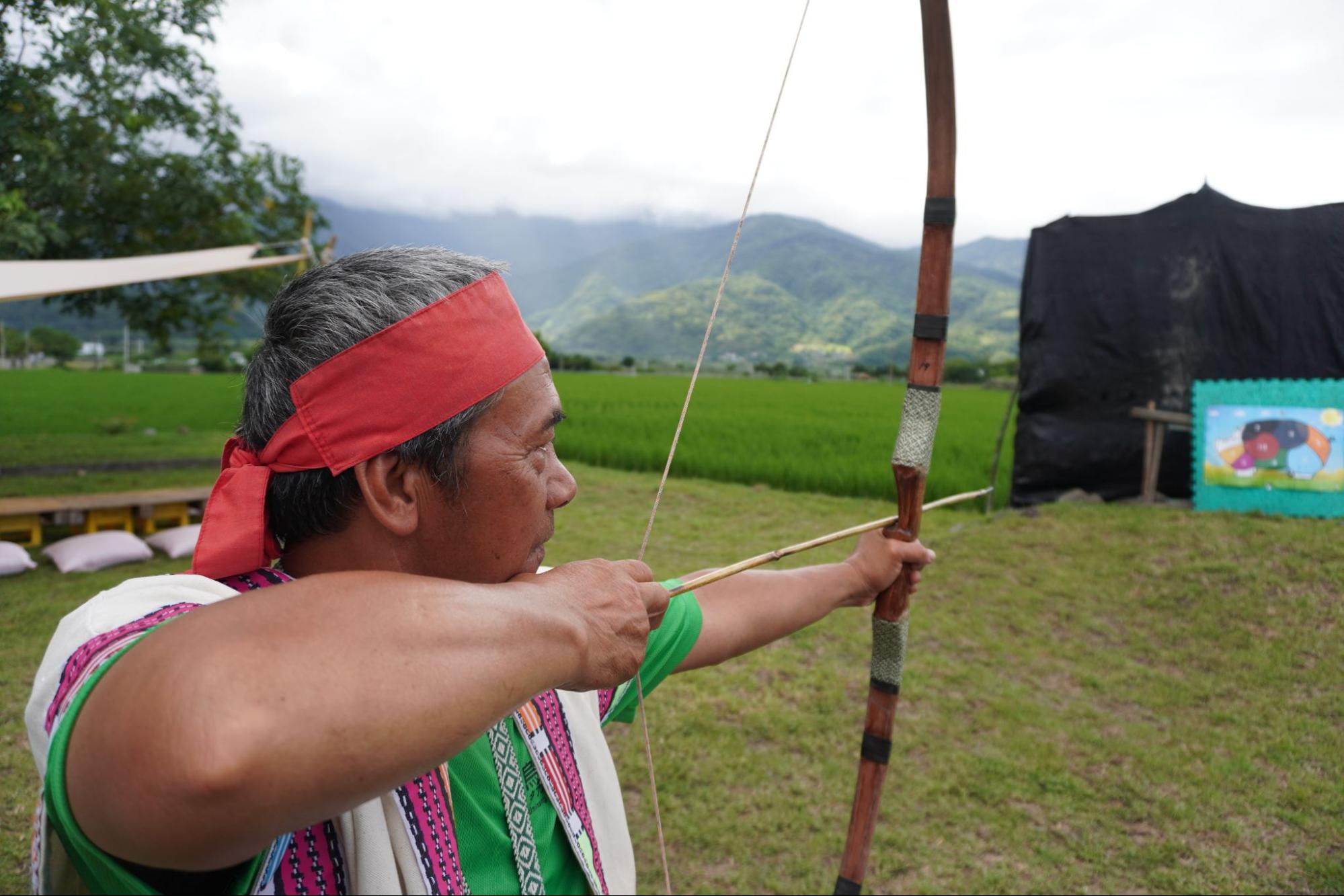 Havutaz, archery instructor of the Bunun tribe. (Photo: Ian Huang)
Havutaz, archery instructor of the Bunun tribe. (Photo: Ian Huang)
At the festival, archery and spear-throwing stood out from the rest of the activities. Many people surrounded the instructors from the Bunun tribe, also known as the hunting natives, to learn or at least take a glance at the traditional way of living that has been passed down long ago and still being practiced today.
The instructors set up a boar target, mimicking the actual hunting scenery. “If you think you can master this after an hour-long session, let me tell you, it’s not going to happen,” said Havutaz, the archery instructor.
The Bunun tribe has been practicing hunting for centuries, long before the colonization by the Japanese, the Europeans, and the reigning Han people. It is not only for survival as meats are accessible nowadays but also embeds the wisdom of the culture – sharing the hard work with the family and respecting the lives of nature.
However, this way of living has also been challenged by the authorities and the public in the past. In 2015, Tama Talum, a Bunun hunter, was prosecuted for the possession of an illegal firearm and poaching. He was convicted and sentenced to three and a half years, and his case went to the supreme court.
It was just one case of the conflict that occurred because of the misunderstanding among different ethnic groups in Taiwan.
Read more: Bunun hunters take visitors into realm.
The Lover’s Bag of Amis
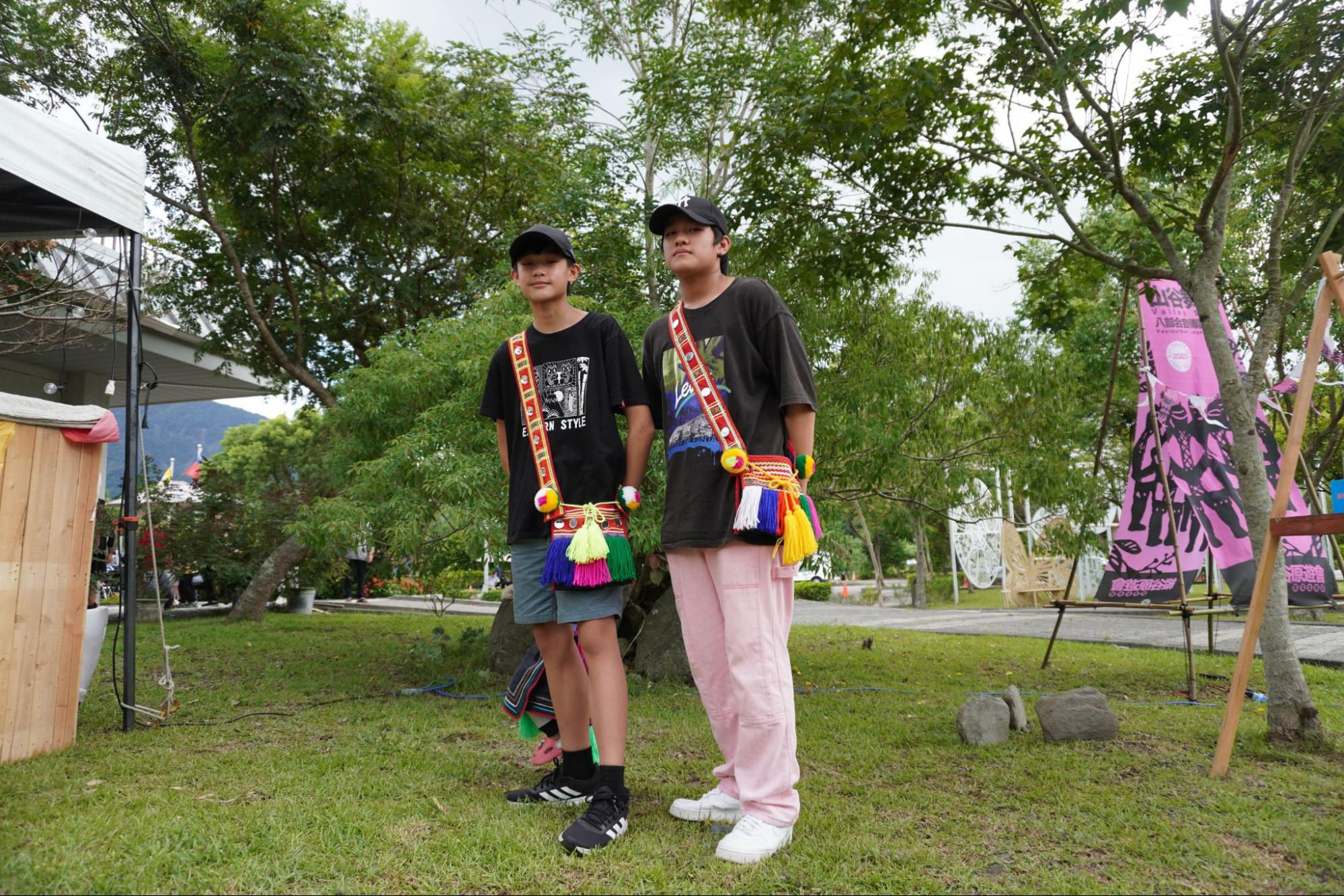 Two Amis teenagers showcasing their lover’s bags made by their grandmother. (Photo: Ian Huang)
Two Amis teenagers showcasing their lover’s bags made by their grandmother. (Photo: Ian Huang)
While hunting work is mainly for men in the tribes, many indigenous women are responsible for weaving.
The lover’s bag is a unique craft of the Amis tribe, named Alofo in Amis. Traditionally, it is given by mothers to sons or by women to their partners. The bag gradually developed into a symbol of identity and became essential for big events or harvest festivals.
During the festivals, young women in the tribe would put betel nuts in their crush’s bag, and the receiver would wear the bag on the young woman as a statement of their relationship if they have the same feeling.
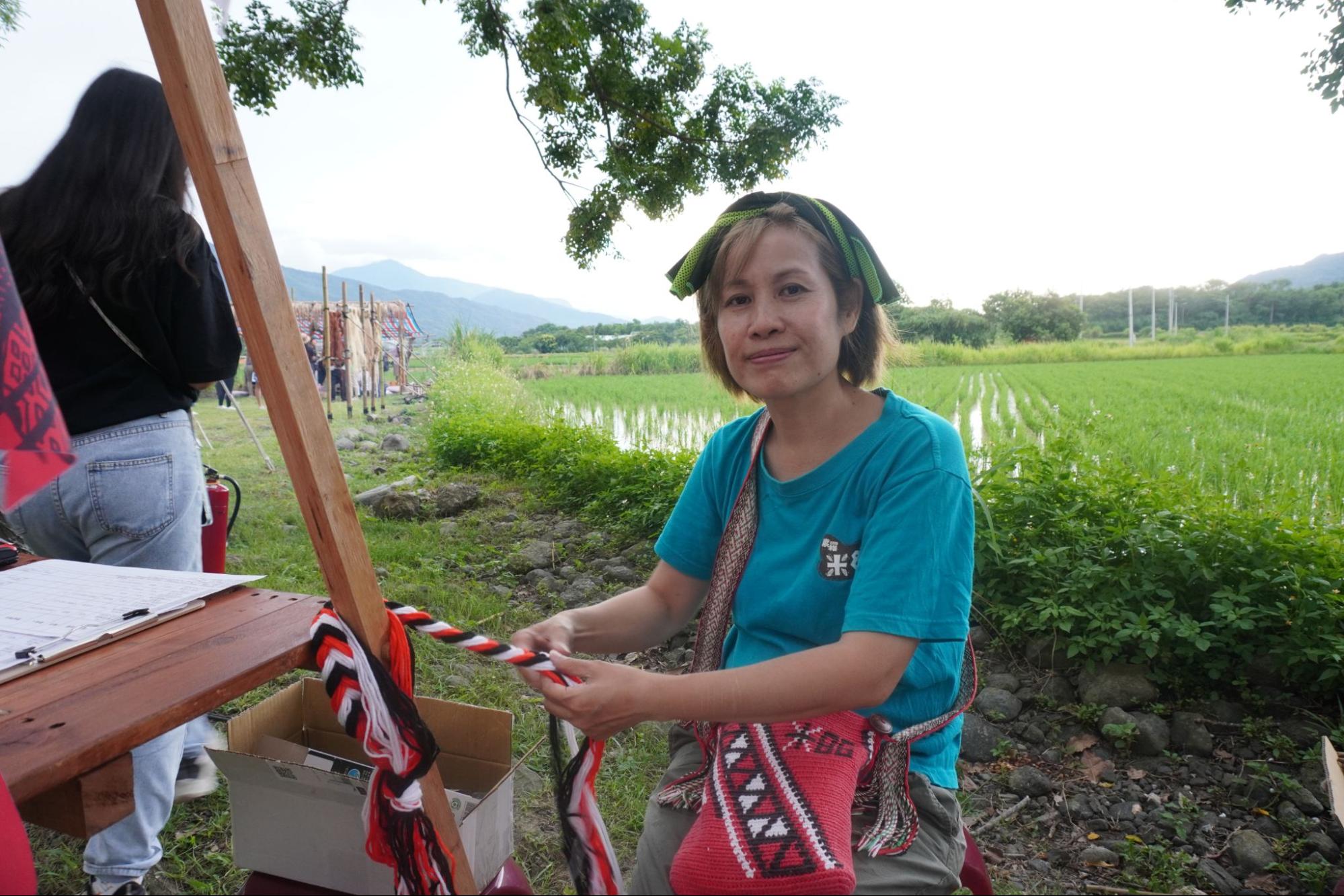 Paca, the teacher of the weaving session. (Photo: Ian Huang)
Paca, the teacher of the weaving session. (Photo: Ian Huang)
“The lover’s bag on the left is for sharing in the Amis culture,” said Paca, the teacher of the weaving session from Mipaliw studio. “We believe our left side is more holy, and if we are sharing things with our friend or family, we would share it from the left because it’s better.”
As the largest native of the sixteen natives, Amis are the farming and fishing people, living near the coasts of eastern Taiwan.
Feast Nature and Savor the Differences
 The outdoor picnic. (Photo: Ian Huang)
The outdoor picnic. (Photo: Ian Huang)
Besides many experiencing activities, the East Rift Valley Festival also offered an indigenous fusion feast for the visitors to enjoy. Combining traditional music and dancing into the course, providing a lifetime memorable experience.
Sitting on bean bags, listening to the music, and hearing the sound of the wind breeze through the rice paddies, while enjoying the red glutinous rice from the local tribe with fresh vegetables. It feels like you are eating what you see around you; everything was given by nature, and nothing goes to waste. A truly lifetime experience.
As the meal proceeded halfway, the host invited the guests to stand up and join the dance outside the campsite with the performers. Groups of people held hands, circled up, and started to dance clockwise. They were laughing, cheering, and even chanting songs they might have never heard of.
“Many indigenous people have felt disrespect at some point in their life back in the old times, but just by how many people have signed up for this festival, I feel the misunderstanding between indigenous and Han people is diminishing, the time has gotten better,” said Paca.
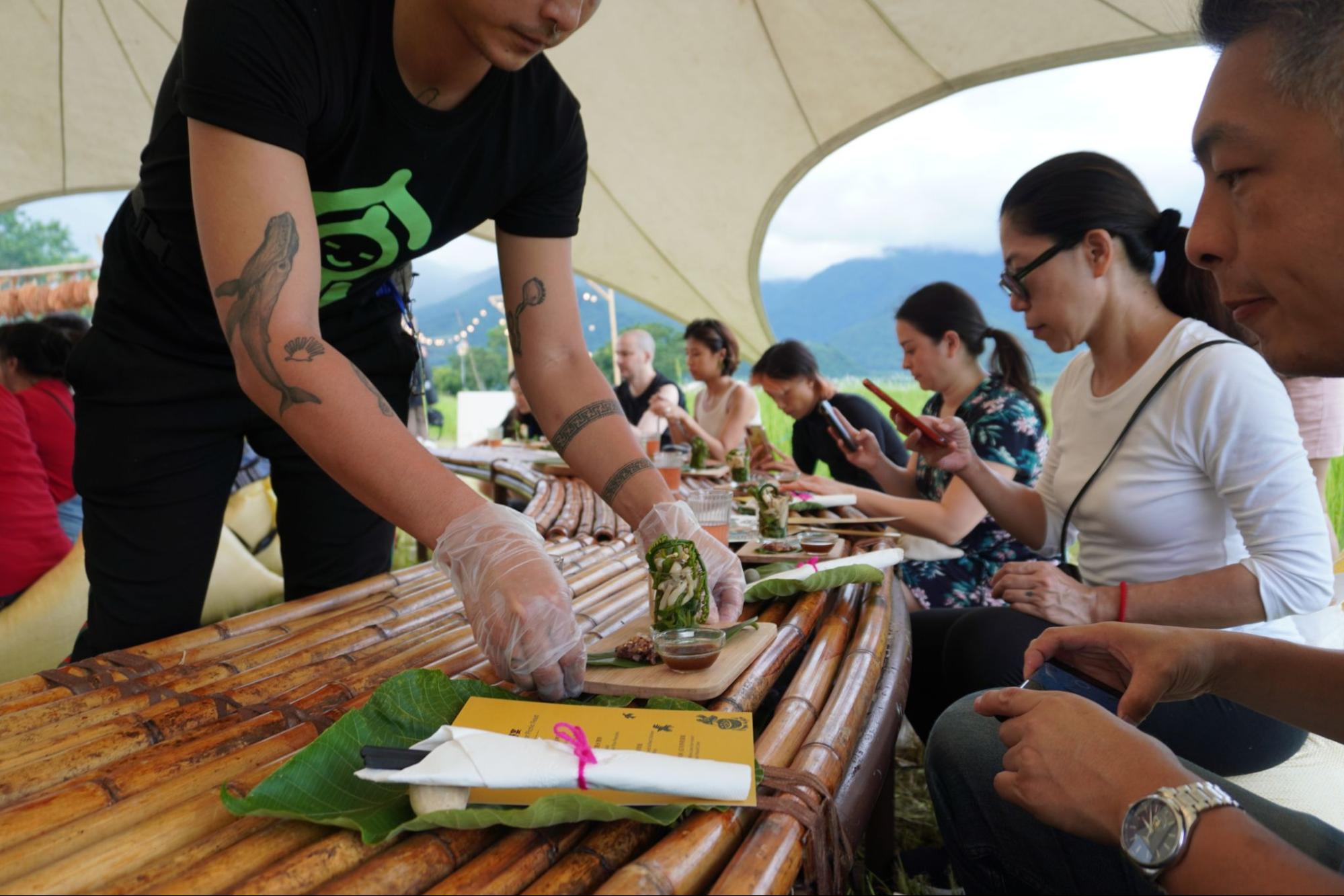 (Photo: Ian Huang)
(Photo: Ian Huang)
The Festival set the scene more as a fair, so it’s more convenient for the general public to experience and learn about indigenous people and their culture.
With 600,000 indigenous people in Taiwan, accounting for only 2-3% of the total population of the Han people, the history and culture of the natives were normally cast with a pinch of mystery in the dominant narrative of the major ethnicity. What’s behind it is often more misunderstood, and the microaggressions towards these minorities.
The rest of the Bunun hunter Tama Talum’s story was after the public knew he hunted for his aged mother, they started to understand and had President Tsai Ing-Wen pardoned him.
The case of Tama Talum's prosecution sparked the discussion of indigenous rights in Taiwan which had more indigenous presences in the public's eye, the improvement of understanding would only start when the talks between different groups begin.
The 2023 East Rift Valley event has concluded. Mark your calendars for the 2024 edition coming this year!
https://www.jacreative.com.tw/hdt/ervtour/index-en.html
Have you read?
- Refreshing retreats: 5 places to chill out in Taipei this summer
- Taiwan: a photographer's paradise?
- Blue ribbons: A riverside guide to Taipei
Uploaded by Ian Huang






